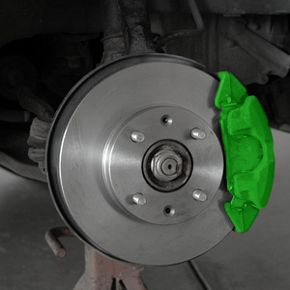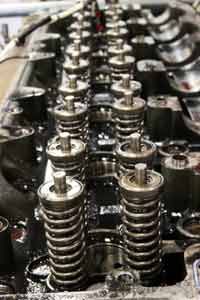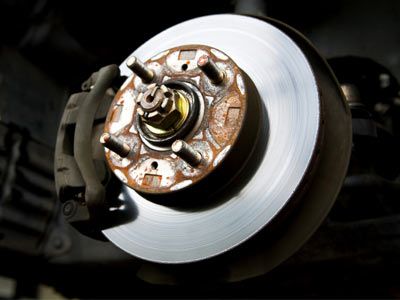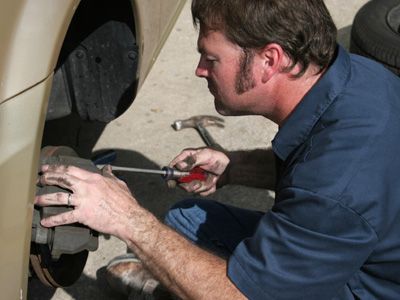Whoa -- there's a reason we're supposed to look both ways before we cross the street. That pedestrian should not have stepped off the curb. Clearly, she doesn't see you. So you hit the brakes, and she jumps back. Problem solved -- except that high squealing sound doesn't seem to be coming from the pedestrian. It's coming from your car.
It sounds as though you might need to reline your brakes. Not to worry; brake relining is actually one of the most common kinds of brake maintenance. It's a pretty simple procedure.
Advertisement
All brakes work by introducing friction to the forward motion of your car's wheels. The friction makes it harder and harder for the wheels to go forward, which means -- guess what? -- they stop. In physics terms, this means your brake pads are turning the car's kinetic energy into heat energy. Disc brakes do this by means of a friction pad (a.k.a. the brake shoe or brake line) that presses into contact with a rotor (the disc).
After a while, all that friction causes erosion. Brake relining just means replacing the friction pads. It's a normal part of driving, and it doesn't necessarily mean your car has a huge problem.
In this article, we'll take a look at how to take out the old brake lines and put in the new ones. But first, how do you prepare for this procedure? And which tools will you need? Read on -- and if those brakes are really loud, maybe it's time to walk to the auto shop.
Advertisement



